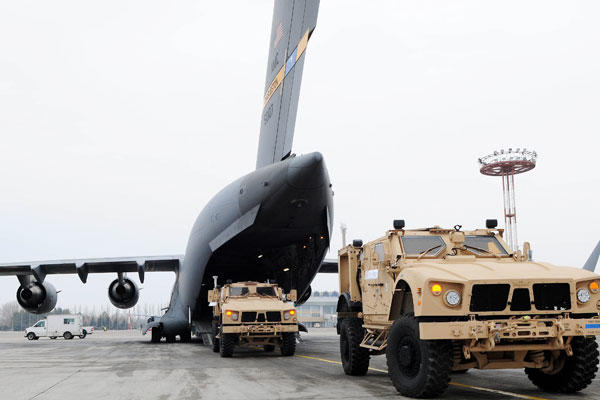For the past decade, armor protection has dominated U.S. combat vehicle programs. Now, maneuver officials are breaking with that tradition, abandoning armor for highly transportable, all-terrain vehicles.
The Maneuver Center of Excellence at Fort Benning, Ga., recently reached out to the defense industry to see if it could build the new Ultra Light Combat Vehicle -- a new effort to equip infantry brigade combat teams with go-anywhere vehicles capable of carrying a nine-man squad.
Maneuver center officials talked to Military.com on Tuesday about the search for the ULCV and how it fits in with the Army's other new combat vehicle programs.
For the past decade, enemy forces in Iraq and Afghanistan relied heavily on improvised explosive devices -- roadside bombs that wreaked havoc on U.S. military vehicles. The tactic forced the Pentagon to rely more on heavy armor protection, sacrificing mobility of ground forces.
The mind-set that developed the densely armored, Mine Resistant Ambush Protected vehicles has carried over into modernization programs such as the Ground Combat Vehicle, the Army's high-priority effort to replace the Bradley Fighting Vehicle.
Lawmakers recently cut most of the funding for the U.S. Army's Ground Combat Vehicle -- a move that has all but killed the high-profile acquisitions effort.
Heavy armor works well in heavy brigade combat teams, but it has no place in the light infantry formations of the IBCT of the future, said Lt. Col. Kevin Parker, branch chief of Light Systems in the MCoE's Mounted Requirements Division.
"I am not trying to refight Afghanistan and Iraq," Parker said. "With any high-speed avenue of approach, particularly a road, it's a very easy thing to target. ... If I am gonna drive down the road, I probably want to be in MRAPs because that is where [the] enemy can target me with IEDs."
The ULCV instead would be designed to travel 75 percent of the time across country and on rough trails.
"We are looking for freedom of maneuver for the IBCTs across country," Parker said. "It provides that commander with mobility options that currently he does not have."
Army officials continue to work with the Marine Corps to deliver the Humvee replacement, the Joint Light Tactical Vehicle. Leaders from both services were forced to pare down expectations for this truck as costs spiraled out of control as officials wanted to increase armor while lightening the overall weight.
Maneuver officials maintain that the ULCV is not competing against the JLTV. The ULCV is designed to fill a capability gap of being large enough to carry a nine-man squad but light enough -- at 4,500 pounds -- to be sling-loaded by a UH-60 Black Hawk helicopter.
"Dismounted infantry move by UH-60 because that is the vehicle that the tactical commander can get his hands on, so you want to make sure that the vehicle that is supporting that dismounted infantry can also be moved around by that platform," Parker said.
The only way to achieve this weight and meet the capability is to trade armor protection for speed and mobility, Parker said.
Currently, IBCTs can still move only as fast as a heavily burdened infantryman can walk.
"The guy has nothing right now; he's walking at four miles an hour, vulnerable, on his feet," he said.
The ULCV would also be air-droppable from C-130 and C-17 aircraft in combat configuration. It would have to carry up to 3,200 pounds, which is equal to a fully equipped, nine-man squad. It would have a range of up to 300 miles on internal fuel. Maneuver officials are also interested in the vehicle performing on high-altitude terrain such as ridges and summits.
Defense firms have until Feb. 21 to respond to the MCoE's Jan. 22 Sources Sought request. Maneuver officials don't think this is going to be too challenging for industry to handle, Parker said.
"A lot of the stuff we have seen is more ATV-looking rather than enclosed with a cab," Parker said. "Then again, if someone brings something with a cab, we are not telling them not to."
It's too early in the effort to estimate how many the Army would buy, Maneuver officials maintain. The ULCV is intended to be an asset of the combatant commander, not standard equipment for every infantry battalion.
"It's an option to commanders when units deploy and will be available to train on," Parker said. "We are not motorizing the IBCT."


























